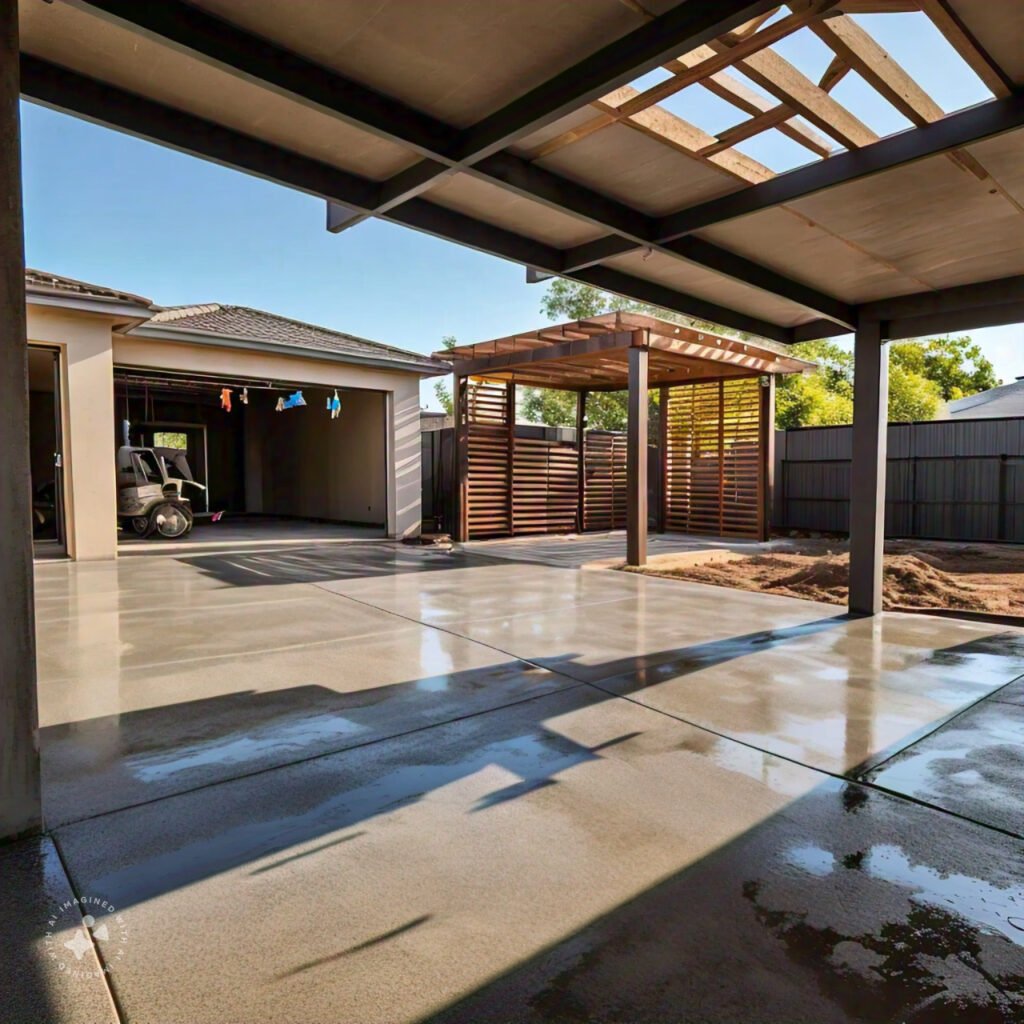When embarking on any construction project, ensuring smooth operations and accessibility is paramount. One of the key elements to consider is the construction driveway. This temporary yet vital pathway facilitates the movement of materials, equipment, and personnel to and from the site. But how long should it be? Let’s explore the factors that determine the ideal length for a construction driveway.
Understanding Construction Driveways
Definition and Purpose
A construction driveway is a temporary access route designed to support the logistical needs of a construction site. It serves as the main thoroughfare for vehicles, including heavy machinery, delivery trucks, and worker transport.
Types of Construction Driveways
Construction driveways can vary in type based on the materials used and the specific requirements of the project. Common types include gravel, asphalt, and stabilized soil driveways.
Factors Influencing the Length of a Construction Driveway
Site Layout and Topography
The physical characteristics of the construction site play a significant role in determining the driveway’s length. Factors such as site dimensions, access points, and terrain must be carefully assessed.
Project Scale and Type
The nature and scale of the construction project—whether residential, commercial, small-scale, or large-scale—will influence the driveway’s length. Larger projects typically require longer driveways to accommodate increased traffic and larger equipment.
Equipment and Vehicle Requirements
The types of vehicles and equipment that will use the driveway are critical considerations. The driveway must be long enough to allow for the maneuverability and parking of all necessary vehicles.
Local Regulations and Permits
Compliance with local zoning laws and environmental regulations is essential. Specific permits may dictate minimum driveway lengths and other specifications.
Site Layout and Topography
Analyzing Site Dimensions
Understanding the overall dimensions of the construction site helps determine the necessary length of the driveway. A larger site may require a longer driveway to ensure accessibility to all areas.
Access Points and Building Location
The location of access points relative to the main construction area influences the driveway length. It’s crucial to plan for a route that provides the most direct and unobstructed access.
Slope and Terrain Considerations
Slopes and uneven terrain can complicate construction access. In such cases, the driveway may need to be extended or adjusted to navigate these challenges safely.
Project Scale and Type
Residential vs. Commercial Projects
Residential projects often require shorter driveways, as they typically involve smaller equipment and fewer deliveries. In contrast, commercial projects may necessitate longer driveways to accommodate larger vehicles and higher traffic volumes.
Small-Scale vs. Large-Scale Construction
Smaller construction projects might get by with a shorter driveway, while large-scale developments often need extensive driveways to handle the increased logistical demands.
Equipment and Vehicle Requirements
Types of Vehicles Used
Different types of construction vehicles have varying space requirements. Heavy machinery and large delivery trucks need more room to maneuver compared to smaller vehicles.
Turning Radius and Maneuverability
The turning radius of the vehicles using the driveway is a key factor. The driveway must be long enough to allow these vehicles to turn and navigate without difficulty.
Storage and Parking Needs
Adequate space for vehicle storage and parking is essential. This includes not only active construction vehicles but also those awaiting use or delivering materials.
Local Regulations and Permits
Zoning Laws
Local zoning laws may have specific requirements regarding the length and specifications of construction driveways. It’s important to consult these regulations during the planning phase.
Environmental Regulations
Environmental considerations, such as protected areas or water runoff management, can influence the design and length of the driveway.
Permit Application Process
Acquiring the necessary permits involves understanding and adhering to local guidelines, which may include driveway length specifications.
Calculating the Optimal Length
General Guidelines
While there’s no one-size-fits-all answer, a good rule of thumb is to ensure the driveway is long enough to accommodate the largest vehicle using it, with extra space for safe maneuvering.
Case Studies and Examples
Examining similar projects can provide useful benchmarks. For example, a typical residential construction driveway might be around 20-30 feet long, while a commercial site’s driveway could extend to 100 feet or more.
Materials and Construction Methods
Common Materials Used
Gravel, asphalt, and stabilized soil are common choices for construction driveways. Each material has its benefits and suitability depending on the project needs.
Installation Techniques
Proper installation ensures the driveway can withstand the rigors of construction traffic. This includes preparing the sub-base and ensuring adequate drainage.
Maintaining the Construction Driveway
Regular Inspections and Repairs
Regular inspections help identify and address issues such as potholes or erosion early, preventing more significant problems down the line.
Managing Wear and Tear
Heavy use can lead to significant wear and tear. Implementing measures like reinforcing high-traffic areas can prolong the driveway’s lifespan.
Cost Considerations
Budgeting for a Construction Driveway
Allocating a sufficient budget for the driveway is crucial. This includes initial construction costs and ongoing maintenance expenses.
Cost-Saving Tips
Using locally sourced materials, opting for gravel over asphalt, and efficient planning can help reduce costs without compromising quality.
Environmental Impact
Minimizing Ecological Footprint
Choosing environmentally friendly materials and construction methods can help minimize the driveway’s ecological impact.
Sustainable Practices
Implementing sustainable practices, such as recycling materials or using permeable surfaces, can enhance the driveway’s environmental performance.
Safety Considerations
Ensuring Safe Access
Safety is paramount. The driveway must provide safe and unobstructed access for all vehicles and personnel.
Traffic Management
Effective traffic management strategies help prevent congestion and accidents, ensuring smooth and safe operations on the construction site.
Common Challenges and Solutions
Weather-Related Issues
Adverse weather conditions, such as heavy rain or snow, can affect the driveway’s usability. Planning for drainage and snow removal is essential.
Navigating Difficult Terrain
Construction sites with challenging terrain require additional planning and possibly extended driveways to ensure accessibility.
Conclusion
In summary, the length of a construction driveway is influenced by various factors including site layout, project scale, vehicle requirements, and local regulations. By carefully considering these elements, you can design a driveway that meets your project’s needs while ensuring safety and efficiency.
FAQs
- How wide should a construction driveway be? A construction driveway should typically be at least 10-12 feet wide to accommodate most vehicles, but this may need to be wider for larger equipment.
- Can I use gravel for a construction driveway? Yes, gravel is a popular and cost-effective choice for construction driveways, offering good drainage and durability.
- How do I maintain a construction driveway during winter? Regular snow removal and the use of de-icing agents can help maintain the driveway during winter months. Ensuring good drainage also prevents ice buildup.
- What permits are needed for a construction driveway? Permit requirements vary by location, but generally, you’ll need to adhere to local zoning laws and obtain the necessary construction permits from your municipality.
- How do I choose the right location for a construction driveway? Select a location that provides the most direct and safe access to the construction site, considering factors like terrain, existing structures, and traffic flow.


